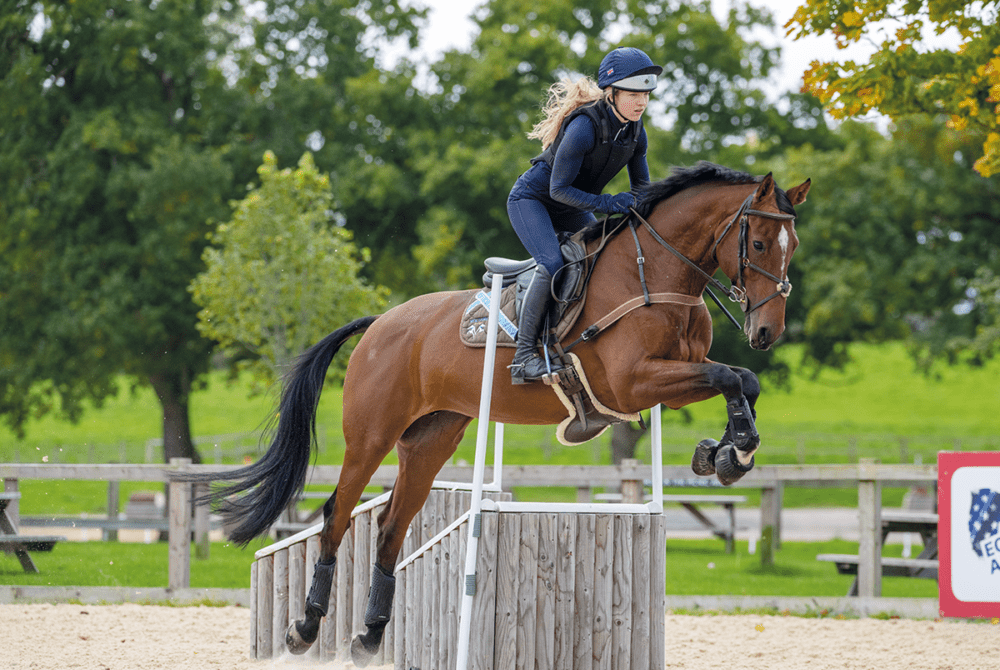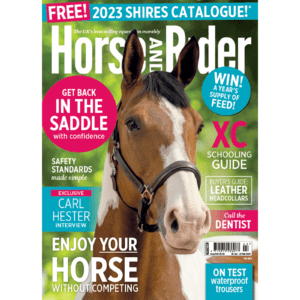Go arena cross-country schooling: part three
Posted 17th January 2023
From roll-tops and skinnies to corners, ditches and arrowheads, eventer Felicity Collins shares her guide to cross-country fences

Count them up and a cross-country course presents quite a diversity of challenges in the form of different types of obstacles for your horse to navigate. Dwell on them for too long and they might feel overwhelming, but by looking at them through your horse’s eyes and introducing them sympathetically, you’ll set him – and you – up for a successful round. Let’s get started.
Straight and narrow
Fence type: Skinnies
What is it? A narrower-than-normal fence
What your horse sees: These often cause a bit of worry for riders, yet, actually, where they’re flagged for cross-country, your horse will see a winged, albeit narrow, fence that he’ll be able to understand quite well. The problems come from inaccurate riding. If you approach at an angle or don’t make it crystal clear to your horse where you’d like him to go, you could end up with a costly run-out.
How to ride it: I don’t ride skinnies much differently from a standard jump. Focus on setting your horse onto his line well in advance of the fence, sit centrally in the saddle with an even contact and both legs wrapped around his sides.
Step by step
Fence type: Steps or banks
What is it? Steps involve your horse jumping from higher to lower ground, and vice versa. They can be set up individually or as a staircase when you will ride several in a row.
What your horse sees: This depends on how you ride – if you give with your hands and allow your horse to stretch his neck and look, steps will be reasonably simple for him to digest. However, mistakes can creep in if you maintain too strong a contact until the last minute.
How to ride it:
Pick small steps that you can walk up and down and do this as many times as it takes for it to become boring. Your horse should be popping up and down nicely and in a rhythm before you step up a gear.
Going uphill is easier than downhill, just remember to keep your leg on, maintain a soft contact and follow your horse’s movement with your upper body.
When it comes to going down, pick a point in the distance to look at and up to, roll your shoulders back to keep your body upright and keep your leg slightly forward with your heels down. Your horse will naturally want to look down, so your contact needs to enable this, but don’t look down with him or you’ll upset his balance.
Find out how to tackle more cross-country questions in March Horse&Rider – get your copy today!











